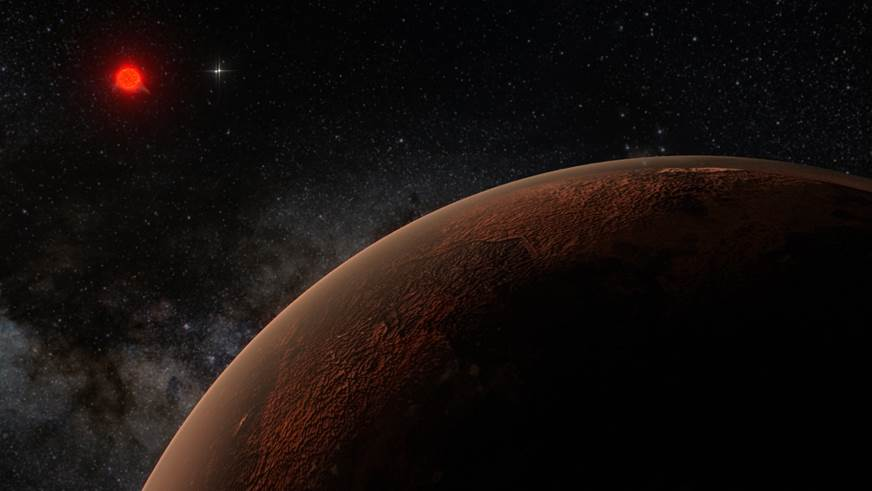Jan 17 2020
Scientists have discovered what they believe to be a second planet orbiting the star closest to our Solar System, Proxima Centuri, which became famous in 2016 with the discovery of an ‘Earth-like’ planet in orbit, Proxima b.
 Artist's impression looking from the planet to its host star.
Artist's impression looking from the planet to its host star.
New observations of Proxima Centauri have made it possible to reveal the presence of what is being described as a low-mass candidate planet, approximately half the size of Neptune, orbiting the star. The discovery, published today in the Journal of Science Advances, was made by an international team of researchers, including from the University of Hertfordshire, which were led by National Institute for Astrophysics-Astrophysical Observatory of Turin and University of Crete and the Institute of Astrophysics at FORTH.
Proxima Centauri is a red dwarf star about 8 times smaller than the Sun. It is the nearest star to the Solar System at a distance of 4.2 light years. Researchers are hopeful that the find could eventually aid our understanding of the make up of different planets and how the universe works.
Hugh Jones, Professor of Astrophysics at University of Hertfordshire, comments, “The proximity of the planet and its orbit at a relatively great distance from its star, means it is one of the best possible chances for direct observations that will enable detailed understanding of another planet. In the future, Proxima c might become a possible target for more direct study by the Breakthrough StarShot project, set to be humankind’s first attempt to travel to another star system.” Professor Jones, along with Paul Butler from the Carnegie Institution, was responsible for producing the most precise dataset for the project using data from the UVES spectrograph.
The announcement of the new signal has been a long time in the making. Initial observations of Proxima were made in March 2000.
Professor Jones, who was also part of the discovery of the ‘earth-like’ planet, Proxima b, which was discovered from the University of Hertfordshire’s Bayfordbury Observatory, explained the process, “We first submitted a paper presenting Proxima b’s existence back in February 2013 though it was not until 2016 that we had enough evidence to conclusively support such a major discovery. Our continuing observations and improved data processing has allowed us to discern the signal of Proxima c. We look forward to confirming the signal with new facilities and finding out how similar or different from our Solar System planets Proxima c really is.”
The discovery follows the recent announcement of a ‘cold Neptune’ and two potentially habitable planets found orbiting nearby stars published in The Astrophysical Journal in which Professor Jones was also involved. The same UVES spectrograph was also used in this project which was led by Fabo Feng and Paul Butler from the Carnegie Institution in Washington.